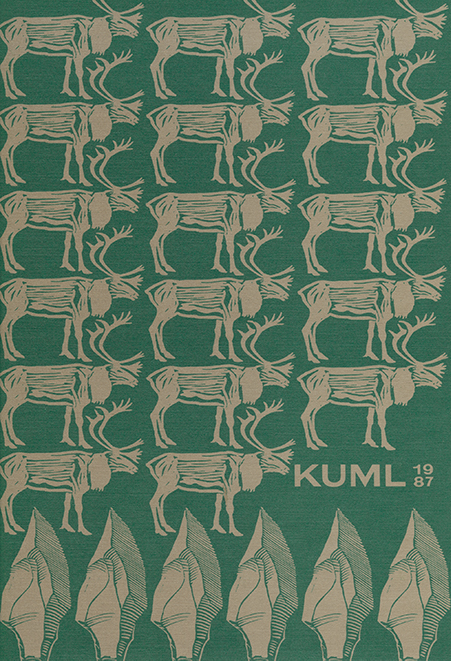A Late neolithic house-site from Vendsyssel
DOI:
https://doi.org/10.7146/kuml.v35i35.110468Keywords:
Late Neolithic, Neolithic, house-site, vendsyssel, houseAbstract
A Late Neolithic house-site from Vendsyssel
In connection with the preventive archaeological measures carried out, prior to the construction of the natural gas network in Vendsyssel, a smaller settlement from the Late Neolithic was excavated by Vendsyssel historiske Museum in 1986 (1), at Øster Nibstrup, about 2 km east of Brønderslev (fig. 1).
The housesite
A few pits and several post-holes were located at the settlement and at least 62 of the posts belongs to a two-aisled house, 19.5 m long and 7 m wide (fig. 2-3). Six of the post-holes are situated inside the house in the centre line for roof support (fig. 4). This has probably also been the function of one more post placed outside the house, inclined slightly towards its western end. These posts are bigger and set deeper in the ground than the rest of the posts belonging to the outside walls and gables (fig. 5). There is a clear distinction between the two walls of the building. The northern wall, which is the more perfect, is made up of more than 20 posts placed in two rows. No more than 10 posts could be connected to the south wall at the time of excavation; it is not unlikely, though, that this situation is due to activities in the area at a later date. The two gables seem alike, but the western one may have been repaired several times.
The state of preservation
The housesite is fairly well preserved, especially when its age is considered. This is partly due to later prehistoric activities, probably in the Iron Age, which have deposited 10-15 cm of soil above the Late Neolithic house and below the present-day topsoil (fig. 6). In this case we have to »blame« the prehistoric farmer for most of the damage done to the house and not his 20th century colleague, as we usually do. Consequently, there may be more wellpreserved houses at the Øster Nibstrup settlement.
Finds and dating
Two Type I flint daggers, both recovered in wall-postholes, date the house to the earliest period of the Late Neolithic (fig. 7). In six more post-holes potsherds were found, two of which are rim-sherds (fig. 8). The dating value of the pottery is limited, but it does not contradict the date suggested by the flint daggers.
Analogies to the Øster Nibstrup house
The house at Ø. Nibstrup agrees nicely with the rest of the houses known so far from the Late Neolithic and Early Bronze Age in Southern Scandinavia. Four sites have been excavated in Himmerland and Salling - Gug, Myrhøj, Tastum og Stendis (2) -and although all these houses have sunken floors, which was never the case in the Ø. Nibstrup house, they have several basic features in common with it. Farther away from Vendsyssel, two-aisled long-houses from this period are known at Limensgård on Bornholm (3), Diverhøj on Djursland (4) and Fosie IV at Malmö in Scania (5). These sites along with others not mentioned here make it clear that the two-aisled long-house by the end of the Neolothic was a construction with a long tradition in Southern Scandinavia.
Karen Kjer Michaelsen
Downloads
Published
How to Cite
Issue
Section
License
Fra og med årgang 2022 er artikler udgivet i Kuml med en licens fra Creative Commons (CC BY-NC-SA 4.0).
Alle tidligere årgange af tidsskriftet er ikke udgivet med en licens fra Creative Commons.


